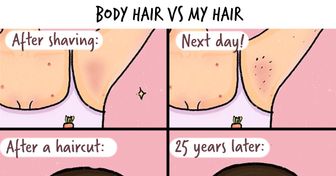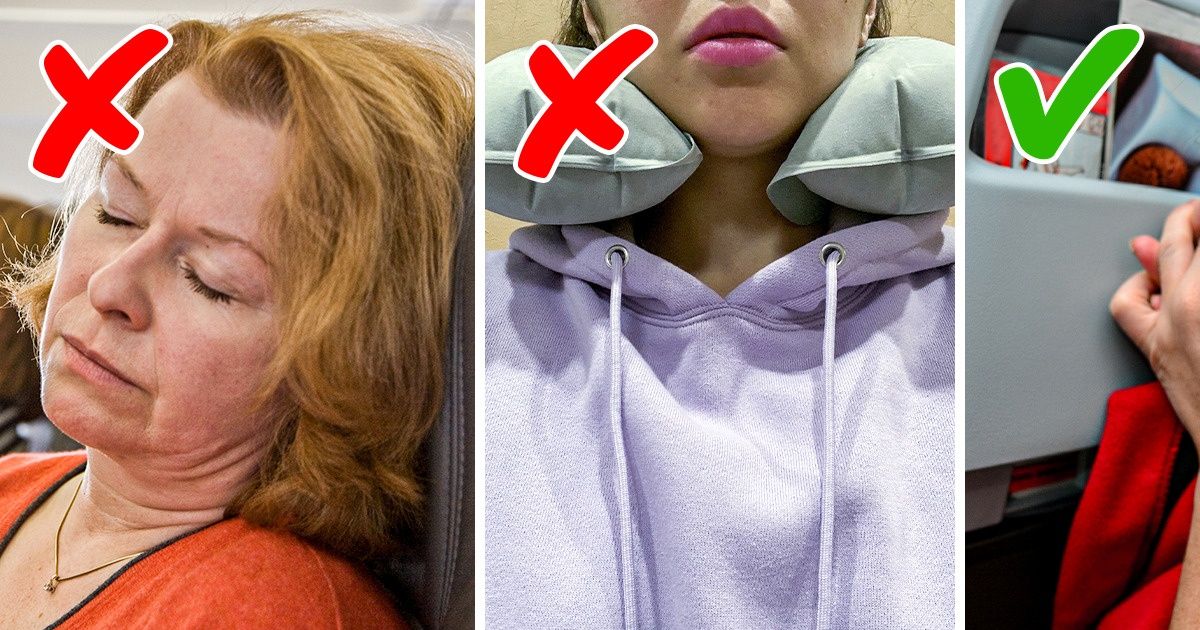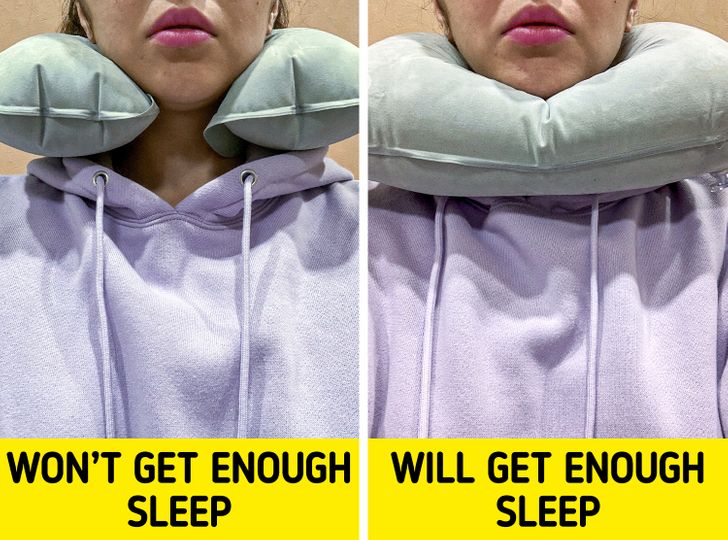17 Witty Illustrations That Capture the Beauty and Complexity of Being a Woman


Unsuccessful efforts to find a comfortable pose for sleeping, screaming kids, stomach issues due to the food consumed onboard — these are just some of the difficulties we face during flights. All these result in us feeling devastated after landing and having a lack of energy to enjoy the new place we are at.
Bright Side is going to tell you how to stop suffering from discomfort during flights and how to make your time onboard pleasant. The bonus part will show you a couple of exercises you can use to warm up your muscles and relax as the plane makes its way through the clouds.
One should approach the task of choosing a seat on a plane strategically: the air in front of the aircraft is fresher and the plane bounces less in these seats and the seats over the wings. It is best not to opt for the seats by the engines, the toilets, or the kitchen. The closer you are to the bow of the aircraft, the less you will be disturbed by engine noise. The seats near the aisle are a few decibels quieter than the ones near the windows.
Experienced travelers recommend reclining the back of the seat as much as possible and opting for a window seat for a more comfortable rest. However, sleep experts say that the best pose for sleeping well is bending forward over the tray. One also shouldn’t bend over the wall near the window. As the survey shows, you’ll unlikely sleep well in this pose.
Before sleeping, our body temperature decreases, because the internal systems of the body begin to work less intensively than during the time you are wide awake. This mechanism can be used during flight to convince the body that it is time to get some rest.
Experienced travelers take a couple of pairs of socks with them onboard. It’s often cold onboard planes and keeping your shoes on is not very comfortable either. In this case, another pair of warmer socks will help you immensely. The main thing to keep in mind is to put your shoes back on when you are going to the lavatory or when walking around the plane to warm up your muscles.
Compression socks can become a good alternative to socks. They help improve blood circulation and decrease the risk of swelling and thrombosis.
An open neck is one of the reasons why you might feel cold and uncomfortable onboard. If you cover it with a scarf or a cardigan, your neck will feel warmer and it will be easier for you to relax.

An experienced traveler shared a life hack that helps him sleep well onboard planes. All you need to do is use a travel pillow backward. In this case, the pillow will serve as a support for your chin and your head won’t bend forward. At the same time, the back of your head also has support — the seat itself.
It’s better to leave bright lipstick, blush, and mascara outside the plane. The air inside the plane is dry and it’s recommended to apply moisturizing cream to the face before boarding instead of foundation. It would be best if the moisturizer had SPF and you could also carry a serum, just in case you feel really dehydrated.
In order to take care of your skin even more, you can seek help from cloth masks. As a rule, they contain hyaluronic acid and other moisturizing ingredients. The main thing to keep in mind is that you should opt for the masks without a strong smell, so as not to inconvenience your fellow travelers.
In order to prevent hair from electrifying and to make it look neat, experts recommend tying a scarf on your head. Also, to protect your mane from dryness, you can apply a leave-in conditioner to the hair. These measures will make any flight harmless for your hair.
A cozy “home-like” atmosphere will help you fight insomnia on board. To create this, grab something soft from your bedroom (like a blanket) when going to the airport. Even something small, like a pillowcase, will smell like your home and your brain will associate this familiar smell with going to sleep.
You can also try to reproduce your everyday routine on a long-haul night flight: change your clothes for comfortable jammies, brush your teeth, read — all in all, do all the things that you normally do before hitting the hay.
The magnesium and potassium in bananas help regulate blood pressure and promote sleep. Therefore, if you find it difficult to fall asleep on the plane, you can eat a couple of bananas.
An experienced flight attendant shared on social media that the reservoirs, where the water is stored onboard aircraft, are not washed as regularly as you’d expect. That’s why she recommends only consuming drinks from sealed containers: water from bottles, soda, and juices. She also advises abstaining from drinking tea and coffee that are prepared from the water in the reservoirs.
Air conditioners on airplanes serve as barriers — they “blow-off” bacteria, forcing them to settle on the floor faster, and preventing them from getting onto our mucous membranes. Therefore, it is advisable to not turn off the individual ventilation system, maintaining a medium or strong airflow throughout the entire flight.
Due to the low humidity onboard our mucous membranes dry out, making us more susceptible to disease. By turning off the air conditioner, we run the risk of catching an airborne infection.
How do you sleep when on long-haul flights? Please share your life hacks that help you have a good rest onboard.











